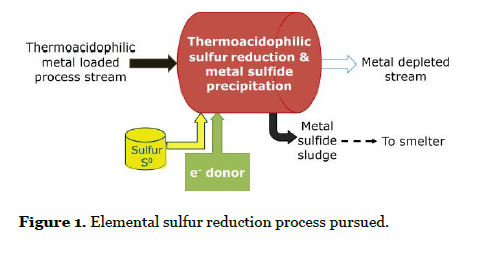
Project
Extremophile elemental sulfur reduction
Metallurgical streams are commonly treated using chemical or physical methods to recover the metal species of interest. These processes often result in a poor quality and voluminous sludge that requires further treatment prior to disposal. Additionally, pure metal precipitates are often difficult to obtain as all the metals precipitate jointly. To increase the mineral recovery and lower costs, this project aims to develop a thermoacidophilic sulfur reduction process to selectively recover metals.
Technological challenge
Hydrogen sulfide reacts with divalent chalcophile metals commonly present in metallurgical streams. The product of such reaction is a metal sulfide which solubility is greatly influenced by pH (eq. 1). The pH dependent solubility allows selective mineral recovery, yielding higher metal recovery efficiencies compared to conventional methods.
H2S(g) + Me2+(aq) → MeS(s) + 2H+(aq) (eq. 1)
Sulphate bioreduction is a well-studied route for hydrogen sulphide production. However current sulphate reduction technologies are not compatible with conditions often found in the metallurgical streams (extremely low pH and high temperature), making this technology expensive and less attractive for industries.
Elemental sulphur is commonly found in thermoacidophilic environments such as volcanic areas and thermal waters. Therefore microbial sulphur reduction metabolism is prone to occur.
Elemental sulfur reduction under thermoacidophilic conditions is a less studied pathway which could potentially optimize the sulfidogenesis process, making it alluring for the metallurgical industry. By reducing elemental sulfur instead of sulfate, a 4-fold reduction in the electron donor consumption can be achieved (eq. 2-3); thus, substantially reducing the Capex and Opex of the sulfidogenesis process.
S0 + 2H+ + 2e- → H2S (eq. 2)
SO42-+ 10H+ + 8e- → H2S + 4H2O (eq. 3)
Here at ETE, we have recently achieved thermoacidophilic sulfidogenesis opening the door to a development of an innovative process in which metal sulfides can be formed under metallurgical water conditions.
The technological challenge of this project lies in the development of a single step elemental sulfur reducing process under thermoacidophilic conditions towards the selective metal recovery (figure 1).
